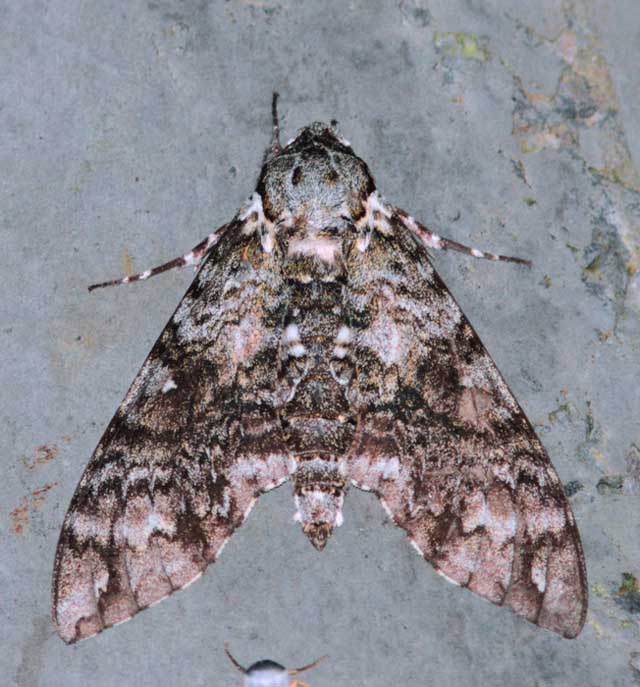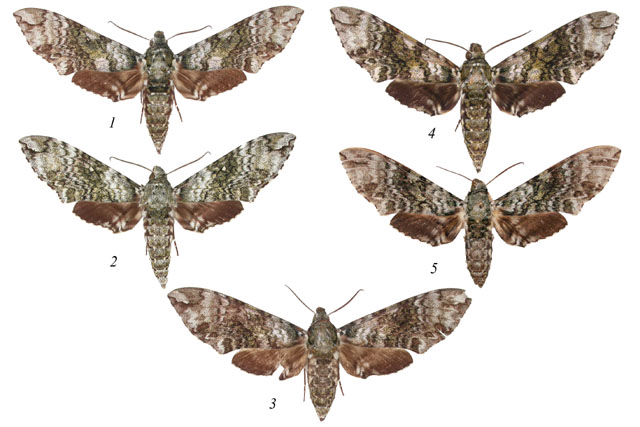Manduca neglecta
|
|
Updated as per DESCRIPTION D’UN NOUVEAU SPHINGIDAE
DES CONTREFORTS ANDINS: MANDUCA NEGLECTA,
Lambillionea, CVI, l Mars 2006, courtesy of Jean Haxaire, August 2, 2006
Updated as per CATE Sphingidae (Bolivia, Ecuador, Peru); May 13, 2011
Updated as per personal communication with Pia Oberg (Wildsumaco Lodge, Napo, Ecuador, February 28, 2011); December 1, 2011
|
Manduca neglecta
Jean Haxaire and Thierry Vaglia, 2006

Manduca neglecta holotype male, Morona-Santiago, Ecuador,
July 27, 1990, 700m, courtesy of Jean Haxaire.
This site has been created by
Bill Oehlke at oehlkew@islandtelecom.com
Comments, suggestions and/or additional information are welcomed by Bill.
TAXONOMY:
Family: Sphingidae, Latreille, 1802
Subfamily: Sphinginae, Latreille, [1802]
Tribe: Sphingini, Latreille, 1802
Genus: Manduca Hubner, [1807] ...........
Species: neglecta Haxaire and Vaglia, March, 2006
|
MIDI MUSIC
.....It's a Wonderful World.....
copyright C. Odenkirk
ON.OFF
<bgsound src="world.mid" LOOP=FOREVER>
|
DISTRIBUTION:
Manduca neglecta
(wingspan: males: 99 mm - 114 mm; females: 106 mm - 118 mm)
flies in
eastern Ecuador: Napo, Pastaza and Morona-Santiago;
Peru: Madre de Dios, Cuzco, Puno: Carabaya; and in
Bolivia: La Paz, in low to mid altitude biotypes (500m-1170mm),
at elevations lower than the very similar Manduca schausi.
Examination of genitalia is probably needed to distinguish them,
although Manduca neglecta is smaller.

Manduca neglecta, Wildsumaco Lodge, Napo, Ecuador,
February 28, 2011, courtesy of Pia Oberg, id by Bill Oehlke.
Regarding the specimen from Wildsumaco Lodge, I am pretty sure it is neglecta and not schausi, largely based on
thoracic markings, and absence of clear black dashes below the cell mark. Pia also indicates it is considerably smaller than a moth determined to be schausi
from the same location just a day or two later. It might, however, also be schausi, as elevation at Wildsumaco Lodge is 1400m, higher than might be expected for
neglecta. Pia had tentatively identified this specimen as schausi, and she may be correct.
Manduca corallina from Central America to Venezuela is also
very similar in both size and appearance. Manduca extrema
is also very similar.
Manduca neglecta has not been confirmed in southern Colombia, but it might be present (WO?).

Manduca neglecta specimen plate, courtesy of Jean Haxaire.
FLIGHT TIMES:
Manduca neglecta adults fly in
January and again in April-May and July-August and November-December
in Ecuador.
In Bolivia there is a specimen taken in November.
Both males and females come to lights.
ECLOSION:
Pupae probably wiggle to surface from
subterranean chambers just prior to eclosion.

Manduca neglecta female, Morona-Santiago, Ecuador,
August 8, 1988, 800m, courtesy of Jean Haxaire.
SCENTING AND MATING:
Females call in the males with a
pheromone released from a gland at the tip of the abdomen.
EGGS, LARVAE, PUPAE:
Larval hosts are unknown.
Use your browser "Back" button to return to the previous page.
Return to Sphingidae Index
Return to Sphingini Tribe



